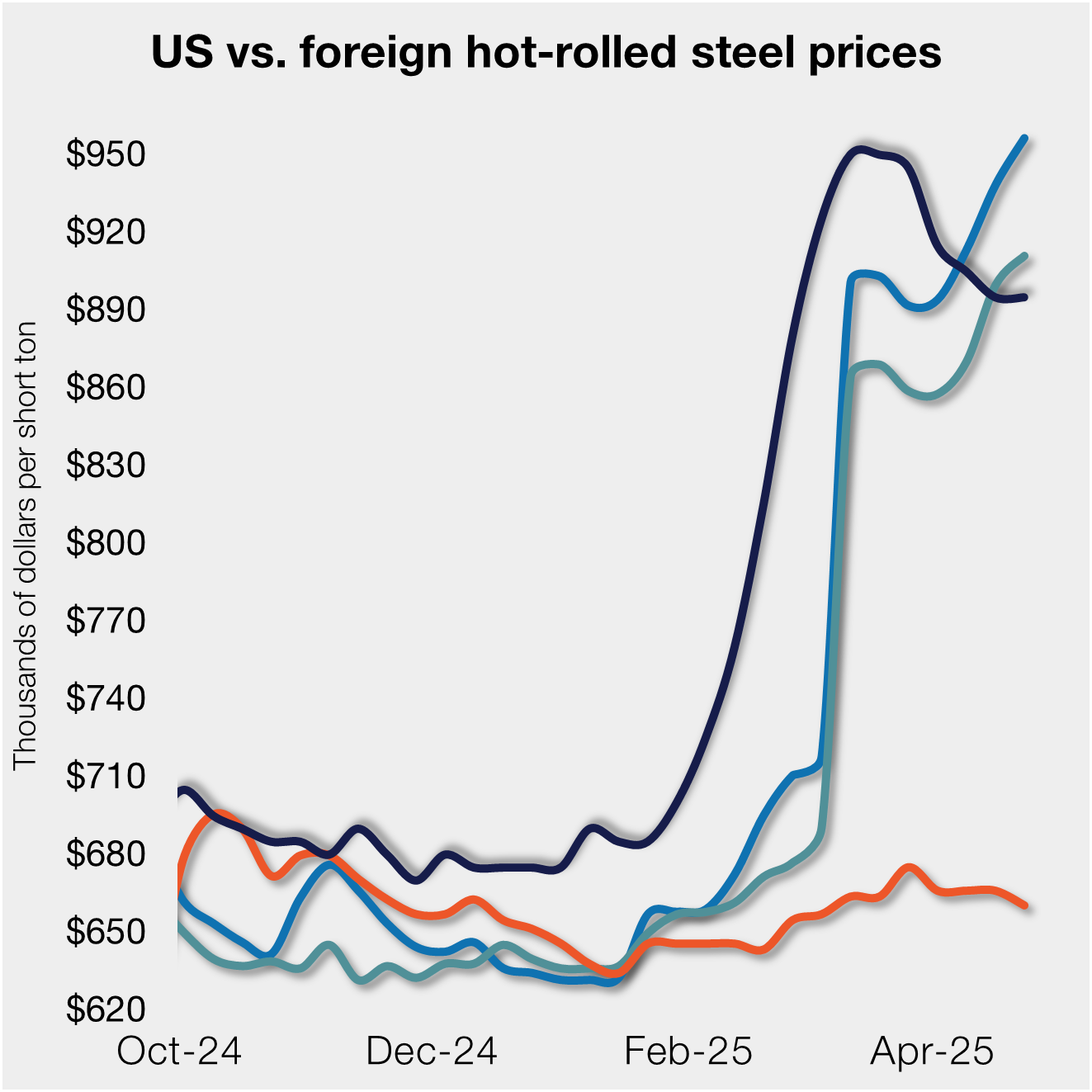Steel Products

Summit Speakers Debate Steelmaggedon
Written by Sandy Williams
September 8, 2020
Will it be “Steelmaggedon” or simply new capacity replacing old? Bank of America analyst Timna Tanners, who trademarked the term, still believes an abundance of new capacity will come online in the next few years, despite the COVID pandemic, oversupplying the market and dooming steel prices. Many of the other executives who spoke during SMU’s Virtual Steel Summit last month offered more tempered views.
“One of the biggest pushbacks to our Steelmaggedon steel glut thesis is that older, less efficient blast furnace capacity will permanently shut to make way for new electric arc furnace (EAF) capacity to take its place. This ‘convenient solution’ would yield a better price outlook, flattening the U.S. cost curve and eliminating distressed players,” said Tanners in a recent report. “Unfortunately, we’re not a believer in a happily-ever-after outcome,” she added. “Furnaces can keep running for years at a loss.”
Cleveland-Cliffs CEO Lourenco Goncalves believes technology-driven capacity will replace outdated capacity. “What upsets me is when old capacity comes back online with a facelift, or not even that,” he said, referring to companies that change owners several times and eventually fold.
“Sometimes in trade journals it looks like we are the biggest idiots, investing in capacity to increase products that no one wants,” said Goncalves. “That is not the case. Those who believe they have the market and they know what they are doing, they are moving in the right direction….CEOs know when to shut down capacity that is not necessary.”
Steel buyers on one panel agreed that some older, inefficient capacity is being replaced with new technology. Tom Valvo, president of Global Residential at MiTek, said the only way to maintain equilibrium of supply and demand is by coordinating the increase in capacity with the reduction of old capacity.
Steel Manufacturers Association President Philip Bell said capacity additions are a “transformation of the domestic steel industry.” Section 232 tariffs helped to increase industry capacity utilization to 80 percent pre-COVID by reducing imports and “companies are doing the next step to be poised to meet demand with modern and state-of-the art efficiency.”
Trade attorney Lewis Leibowitz agreed the market needs new capacity to replace that which is obsolete, particularly at integrated producers. He disagrees with Bell, however, regarding government intervention on steel imports. “The U.S. market needs imports. The U.S. does not make enough steel to satisfy demand,” said Leibowitz. “The market is better at doing this [picking winners and losers] than the government.”
David Burritt, CEO of U.S. Steel, said that mills need to be low cost or have abilities that others don’t. “If Chinese steel stays away and there is a level playing field, let the best steel companies prevail. If we can’t, we will dial [capacity] down. If we can, we will grow it.”
Paul Lowrey, managing director of Steel Research Associates, prefers to look at capacity from a hot strip mill perspective. “I think it is a better indicator of what a company can actually ship,” he said. Little attention is given to capacity being taken out of the system, he noted. “It is a myth that we don’t retire old capacity, that it just comes back under a new owner. Actually, we close more capacity than we add.”
In the last 25 years, by Lowrey’s estimates, the industry cut 7.8 million tons of hot strip mill capacity, roughly 10 percent. “When all the new capacity is added, we still have 10 percent less than 25 years ago,” he said. “In the current environment with all the new additions, we are still closing 1.5 million tons more than we are adding.”
“This isn’t the first time it happened in the industry. You remember open hearth steelmaking and ingot casting? We went to continuous casting in the ’70s and ’80s. Open hearths were still operating in the early ’90s. Out with the old and in with the new. The key point is you have to invest in new technology to keep competitive,” he added.
Tanners remains skeptical. Old capacity will not “go away quietly,” she maintains. “If new capacity is to have a place to play, it will need to push out high cost capacity. We don’t believe they [high cost mills] think they are inefficient and they won’t walk away.”

Sandy Williams
Read more from Sandy WilliamsLatest in Steel Products

S232 lifts EU HR price over US, Asian HR still well behind
Domestic hot-rolled coil prices were flat this week after dropping for four straight weeks. Most offshore markets bucked the trend and gained ground.

SMU Steel Demand Index dips into contraction
SMU’s Steel Demand Index has moved into contraction, according to late April indicators. The slowdown comes in response to growing tariff uncertainty after the index reached a four-year high in late February.

Nucor selects Fives Group for new galv line at CSI
Nucor Corp. has tapped Fives Group as its partner in designing and manufacturing the new continuous galvanizing line being added at its California Steel Industries (CSI) joint venture in Fontana, Calif.

AISI: Raw steel production levels off near six-month high
The volume of raw steel produced by US mills remained relatively flat last week, maintaining the rebound seen one week prior, according to the American Iron and Steel Institute (AISI). Previously at the second-highest rate of the year, production continues to hold at one the strongest levels recorded over the last six months.

Nucor keeps HRC price unchanged
Nucor has kept its weekly hot-rolled (HR) coil price flat this week, after a marginal cut the previous week.
